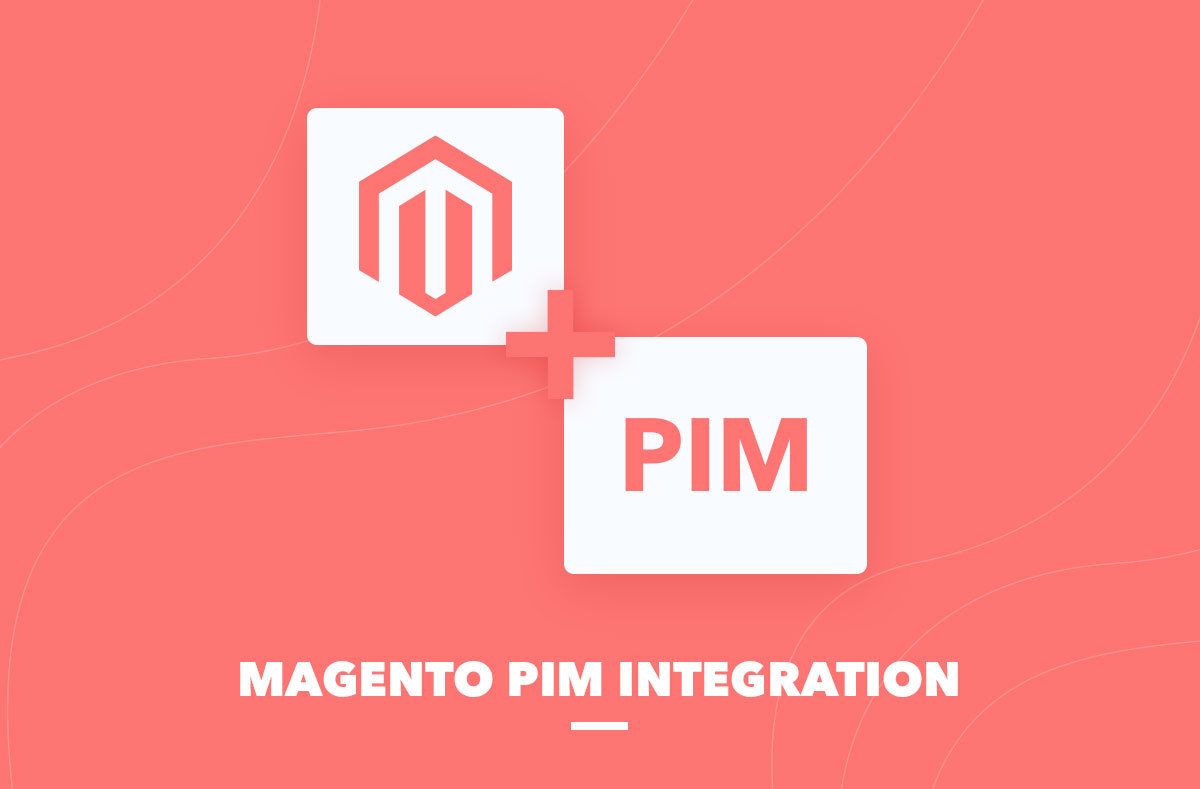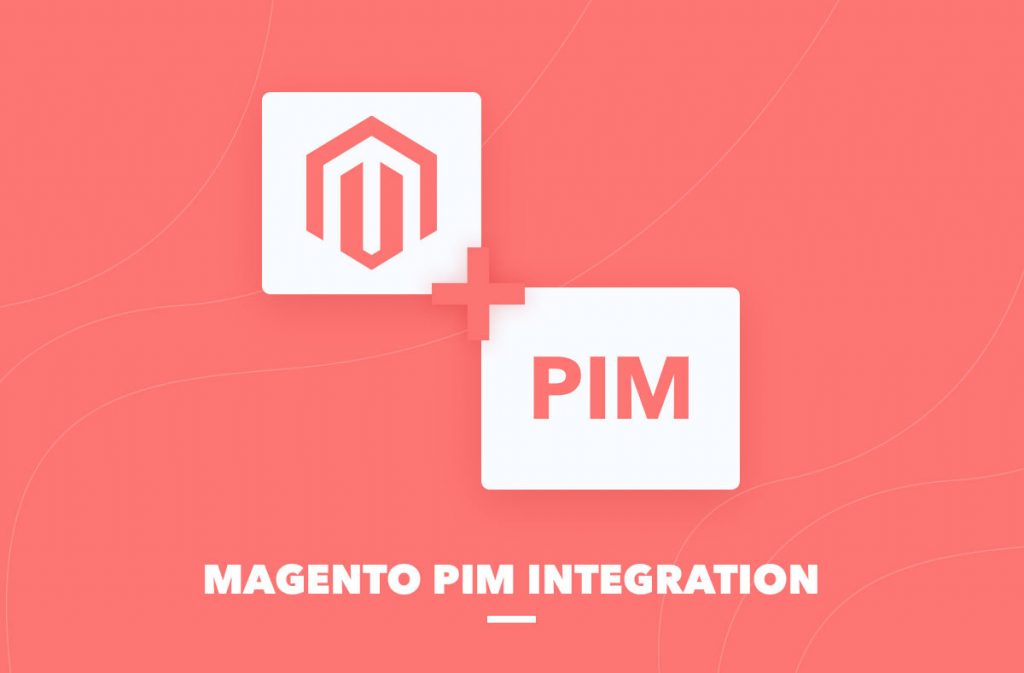
PIM or Product Information Management is the software that helps you to improve your business flow. With PIM, it is easier to manage both small businesses and large businesses. However, when connected to Magento, PIM might produce the biggest added value. This article is about the features that PIM integration might offer when it comes to integrating it with Magento.
What is PIM?
For starters, what is PIM? As you already know, PIM stands for Product Information Management and it is a great help when it comes to managing multiple products in one online store. You might have large amounts of products and large amounts of features for these products. Handling all of these varieties with the automated approach provided by PIM is way easier compared to doing all of this manually. Thus, PIM is the software that helps you to manage product information effectively, and distribute it evenly to all relevant channels of distribution.
When it comes to PIM, you probably want to have a good working PIM, not just any PIM. Ideally, PIM should be a source of real trustworthy information about the products you are selling. That said, PIM is used to provide access to the product information in its entirety, making sure that the data are valid. Practically, with PIM for Magento, you are going to collect all the product information and distribute it among the channels digitally to online stores, including retail platforms, such as Amazon, and printed catalogs, brochures, etc.

How does PIM work?
The idea of PIM is to automate data integration among the ERPs, CRMs, and other systems that contain information about your products. The shared data is integrated and used for the product information. The biggest perk is all the data integration happens simultaneously, so you don’t need the effort of copy-pasting data of your products to various platforms, nor do you need to type and update data manually. PIM does all of this for you, completely automatically.
As soon as installed and configured, PIM organizes the data into catalogs. These catalogs are later connected to different channels, and PIM administrators can organize data according to their needs among these multiple parties. Thus, your data are carefully processed and distributed, and no unsorted data exist. This automation of routine data aggregation and spread allows sales teams to work more effectively, which helps to form a better targeting strategy and boost sales.
Why do you need to use the PIM system?
In a few words, PIM is useful for online retail because it helps to gather product information and spread it across channels. Product information might be enriched by several people at once, and still spread among different channels. Thus, having one central source of data, helps to share, edit, and promote data about products without losing any data.
Practically, PIM Magento tracks all the changes and helps to manage the changes in the way that no data is lost from product descriptions and nothing is doubled without your decision to. So if you have a variety of customizations for products, PIM is definitely your choice to simplify your product management process.
Main benefits of using PIM for your business
Just to sum up a bit, PIM might add to your business the next things:
- Global storage of all your product information across the channels and points of sales
- More free space in your eCommerce platform
- More specifications to your omnichannel retail, including sizes, colors, details, etc.
- User-friendly environment for content management system
- Entering product data only once (not in every retail channel separately)
Best PIM software for your Magento store
There are a lot of types of PIM software, but as soon as Magento 2 is the most popular eCommerce platform, the majority of PIM integrations are built for Magento 2. When PIM is integrated into Magento 2, the product management gets much more convenient. Meet the five best PIM systems below.
Akeneo
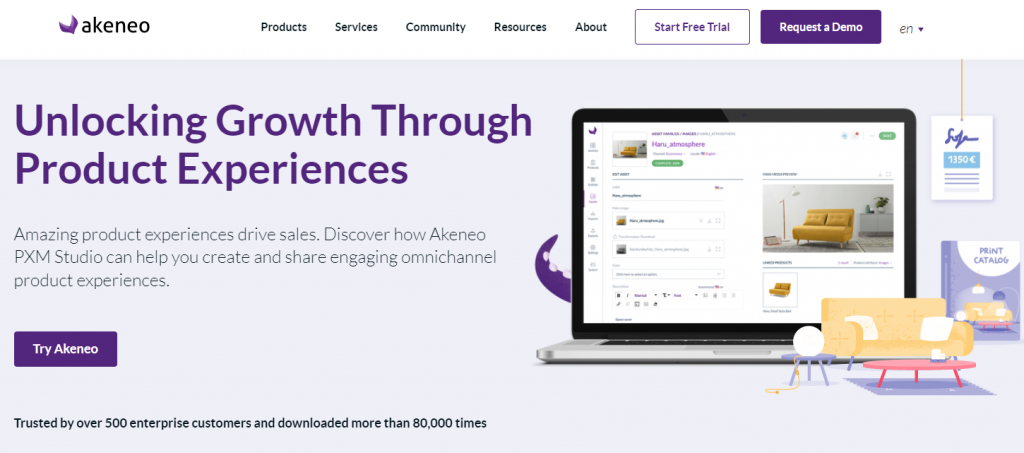
Akeneo is one of the PIMs that are easy to use and simple to integrate. With Akeneo, you are going to find it way easier to centralize and connect all information about your products. Moreover, Akeneo is easy to customize, and therefore it might fit any business needs you have. Akeneo supports all types of catalogs and is used to connect and manage product descriptions easier. With Akeneo, you are more likely to have customer returns reduced, and customer experiences satisfied. The thing is the processes of storing data, exporting, and importing data as well as editing and localizing product descriptions are easier when automated.
inRiver

PIM software from inRiver allows automating information management across sales channels. In addition, inRiver helps to control inventory and supply chains easier with the APIs, connectors, product creation templates, and catalog management features that allow automating integration of backend and product information as well as other information flows. Content planning is easier with inRiver too.
Pimcore
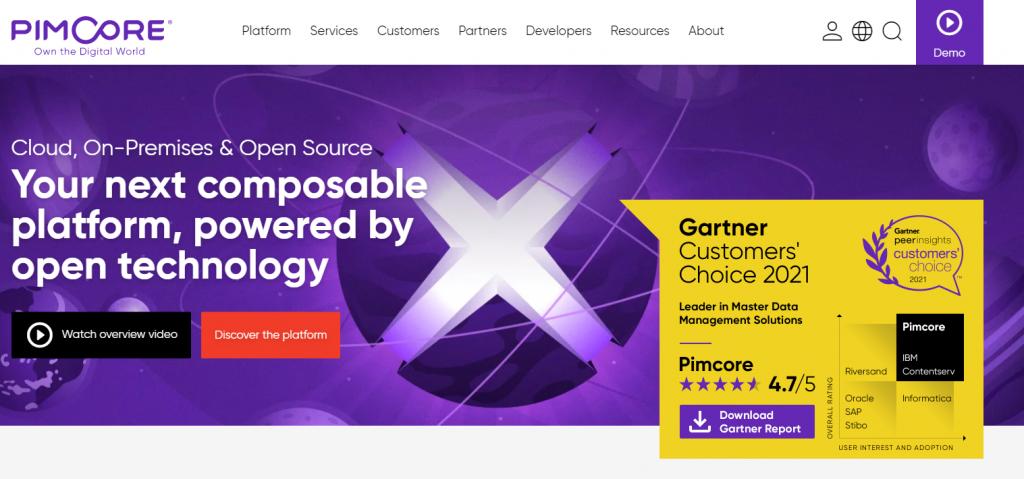
Pimcore is the PIM software that is used by big businesses, such as Ikea and Burger King. The biggest perk of PIM that big businesses like is the inbuilt management features that help to maintain and control multiple-channel management. Also, Pimcore has inbuilt tools to manage website content, publish data and create new content, which is helpful when it comes to selling online.
Thus, with Pimcore, it is easy to have multi-channel sales and manage product information and website content for each channel effectively. With Pimcore, you can easily structure and empower all marketing and technical information about the product. That said, Pimcore helps to consolidate an open-source selling platform, sales channel management, and online sales.
Salsify

Salsify is the PIM software that is cloud-based, which helps it to collect and store information about products, sales, and content management effectively. In multiple languages, Salsify supports product data and logistics management. Salsify is also a great tool for measuring content performance and is designed to fit the needs of various businesses, having developed custom-priced packages for businesses of all sizes. Another useful perk of Salsify is the easy integration with any ERP that the business might have. Thus, with the ability to be customized and a variety of offered pricing packages, Salsify is a great PIM to help almost every business.
BlueStone
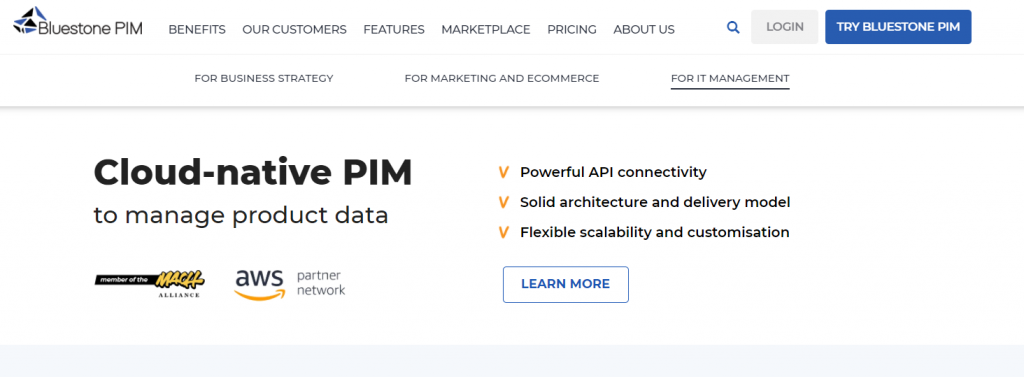
Bluestone is a cloud-based PIM that allows managing product content across multiple channels easily. Moreover, it has an API to embed it into any eCommerce platform. The ability to manage images adds to the user-friendliness, which helps the business owners or the content managers to structure categories and subcategories according to the needs of the business. Moreover, Bluestone can import and export various formats of product information, including scv. Thus, integration with ERP systems gets even smoother. Implementing Bluestone fastens up adding new products and launching a new store.
How to Integrate a PIM system into Magento 2
Practically, there are two major ways to integrate PIM into Magento 2 eCommerce platform. First, you might use an API to do this. Second, it is possible to add it as an extension. The API method is better suited for those who have skills in programming and development. Otherwise, integrating extension requires more business requirements from the business owner. In any case, PIM extension is the third-party integration that should satisfy the needs of the business.
Either way, PIM integration consists of several steps. First, there is a need to add product data to the system. Then, there is a need to conduct a Magento facility test and connect the fields of PIM and the fields that exist in Magento. Afterward, there is a need to create a PIM connection channel, install the third-party extension, and test if everything works correctly. It is recommended to test the data with a few products and then repeat the actions if the test was successful.
Conclusion
Truly, data management might be complicated, especially when you have several stores in Magento. With Magento PIM, you can ensure that your product pages look consistently across all sales channels. Moreover, with PIM integrated into Magento, you can automate most of the content management processes, which makes selling on the Internet easier. Though, at any step of the PIM integration, you might have certain issues. Just don’t hesitate to contact us when you need help. The expertise of the SOFTLOFT team is rich enough to help you with any issue that might arise with PIM integration to Magento.
